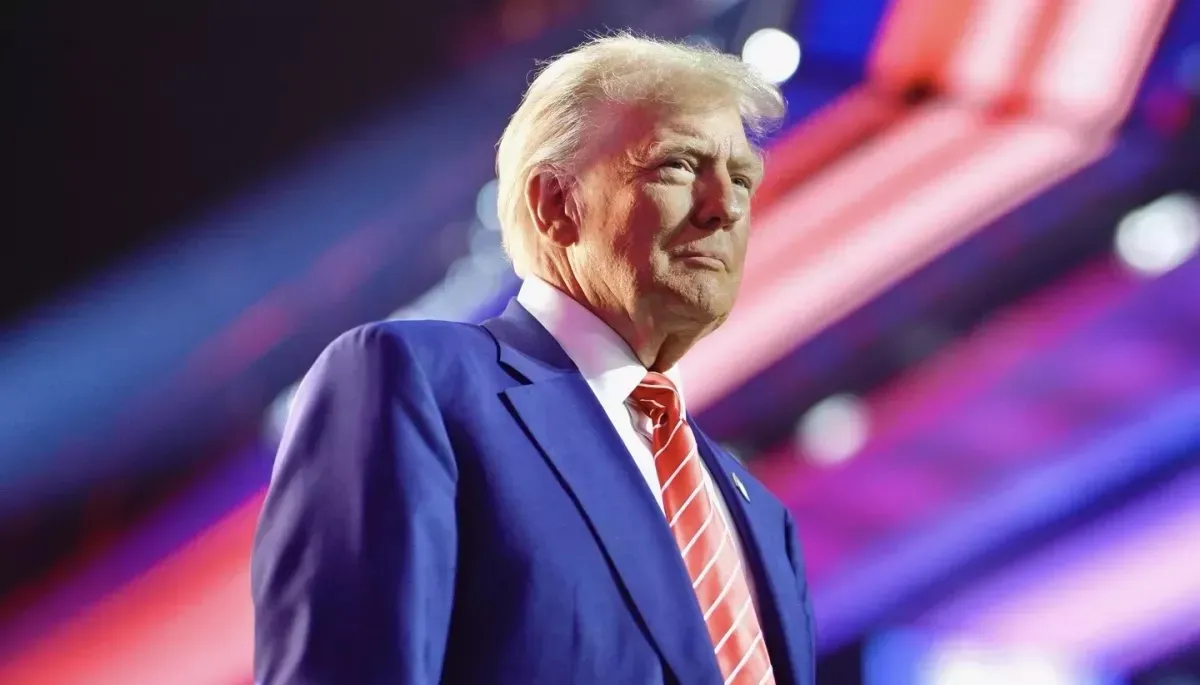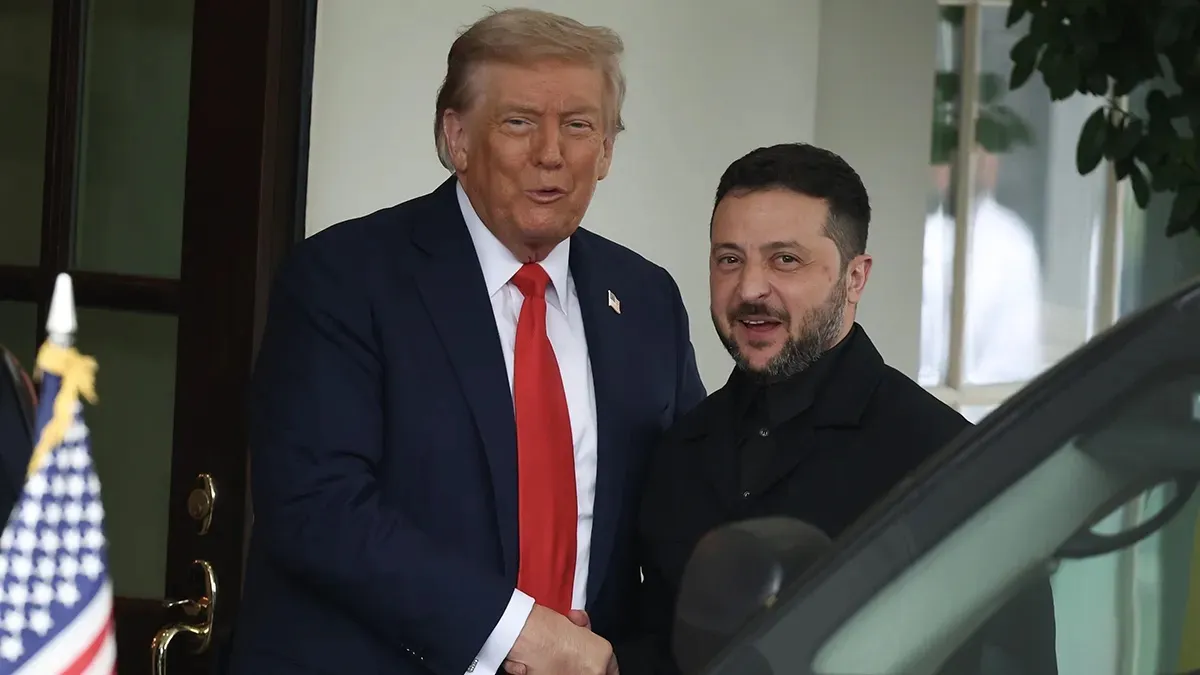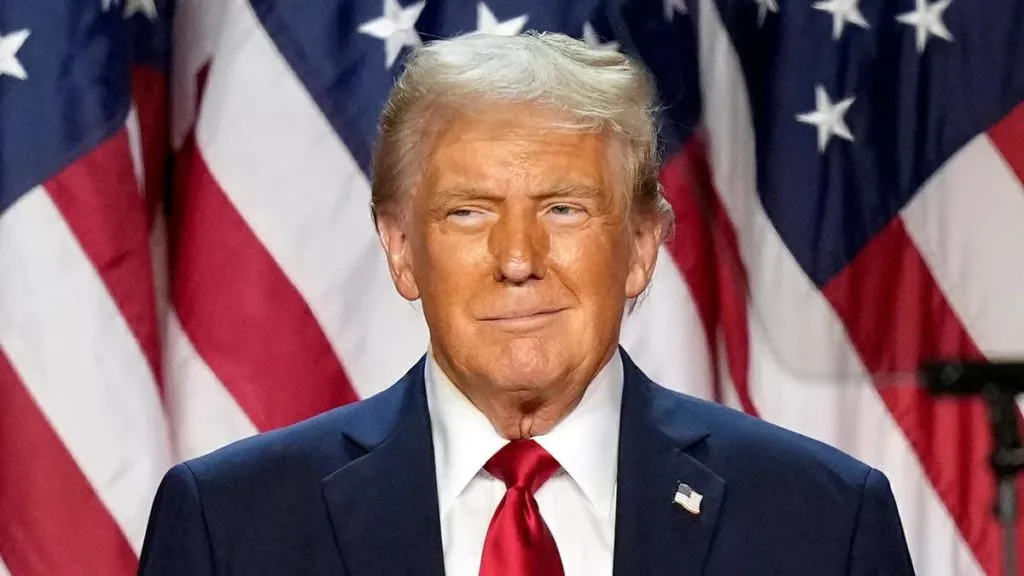“US President Donald Trump’s policy regarding the Russian-Ukrainian war shows a paradoxical evolution. Starting with bold and loud promises of a quick settlement of the conflict, his position has transformed into the preservation of the status quo, which actually legitimizes and contributes to the continuation of the war of attrition. This changed approach is reflected in a key new statement that became the starting point for analyzing his strategy: “Sometimes you just have to”, — write on: ua.news
US President Donald Trump’s policy regarding the Russian-Ukrainian war shows a paradoxical evolution. Starting with bold and loud promises of a quick settlement of the conflict, his position has transformed into the preservation of the status quo, which actually legitimizes and contributes to the continuation of the war of attrition. This changed approach is reflected in a key new statement that became the starting point for analyzing his strategy: “Sometimes you just have to let things go.”
This quote, voiced in the context of the discussion of the possible provision of long-range weapons to Ukraine, defines the transition from the status of an “active mediator” to a “side observer” who waits for the parties to the conflict to exhaust their resources. The doctrine of “let them fight” reflects the concept of a war of attrition, where the final outcome is determined not by a decisive military victory or a diplomatic breakthrough, but by the inability of the parties to sustain further losses.
In this context, it is interesting to follow the evolution of Trump’s statements regarding plans for a peaceful settlement in Ukraine: from the end of the war “in 24 hours” to “let them just keep fighting”, and also to understand why the latter concept is a deeply flawed path to nowhere. UA.News political columnist Nikita Trachuk discussed the issue together with experts.
From “24 hours” to impasse: the evolution of Trump’s statements
Donald Trump’s political position regarding the war in Ukraine has gone from claims of a unique ability to resolve the conflict immediately to apathetic passivity disguised as pragmatic expectation. During the 2023-2024 election campaign, Trump at least 53 (!) times declared of his ability to “end the war within 24 hours” after returning to the White House — or even before the inauguration. The rhetoric was intended to demonstrate his superiority over opponents and his unique ability to make deals — particularly with Putin and Zelensky.
However, when desires collided with the need for concrete actions and diplomatic breakthroughs, a change of course quickly came. In March 2025, Trump named his repeated promises to end the war in a day with “a little sarcasm” and “exaggeration”. This moment marked his transition from a decisive and swift mediator to, in fact, an observer. Despite repeated attempts to install later deadlines despite all the ultimatums to Putin, the American leader has not been able to do anything about the Russian-Ukrainian war until now.
The culmination of this whole process was Trump’s recent statements in an interview with CNN. After such things, it is already finally clear: the president of the United States himself does not know what to do, and therefore chooses, at least for a while, to do nothing at all.
“Sometimes you just have to let things develop. There is no “last straw”. They fight, fight fiercely. This is a difficult war for Putin… and it is also difficult for Ukraine… Sometimes you just have to let the situation reach its limit so that everyone understands everything for themselves.” Trump said on October 2.

The concept of “children on the playground”
The doctrine of “just let them fight” is based on an analogy with children who beat each other on the playground. In this scenario, the external arbiter (the US) refuses to actively intervene so that the “kids” (Ukraine and Russia) figure out their relationship to the point of exhaustion, when both sides are ready to accept mediation and a deal from Trump.
In reality, this analogy exists deeply flawed . It is not about a “childish fight”. It is a terrible, bloody war, the largest in terms of scale in Europe after the Second World War. We are talking about million-strong armies standing against each other, about completely destroyed not even cities, but entire regions, about hundreds of thousands of victims on both sides and millions of refugees.
However, the strategy of “managed stalemate” is quite convenient for the American leader in a political sense. It allows Trump to shift responsibility for the high cost of war from Washington to Kyiv and Moscow. If, as a result of exhaustion, Kyiv will be forced to make territorial concessions, it can be presented as a result of fatigue and inability to continue the struggle, and not as a failure of American policy. This gives Trump the opportunity to maintain the position of an observer, who will intervene only to fix the outcome when both sides are exhausted and ready for a deal.
Trump’s plan to “just let it win” goes beyond simple rhetoric: it is materialized in specific decisions regarding the absence of military aid, which limits Ukraine’s defense potential. The clearest manifestation of this is, in particular, the decisive refusal to provide Kyiv with long-range winged aircraft Tomahawk missiles .
Trump’s decision to abandon the Tomahawk creates a serious military asymmetry. The strategy of attrition is effective for Moscow only as long as Ukraine cannot strike at the strategic rear of the Russian state (logistics, drone production, strategic aviation, etc.). The refusal to provide long-range missiles ensures this asymmetry. The US is deliberately limiting Kyiv, allowing it to wage only a war of defense and survival, but not providing the tools to achieve a breakthrough.
In addition to military aid, the strategy of managed attrition also manifests itself in the abandonment of economic leverage. Trump has said many times that he has no plans to use frozen Russian assets as a negotiating tool. This refusal reduces the financial pressure on Moscow and reduces the price of continued aggression for Putin.

Risks of passive surveillance
The strategy chosen by Trump carries significant risks for Ukraine and long-term international stability. The transformation of the United States from a guarantor of Ukrainian defense into a kind of client of the American military industry (and not directly, but indirectly) is a significant change in role. The goal of American policy in this context is not the achievement of a just peace or the restoration of territorial integrity, but the avoidance of direct participation and the external fixation of the high price of war for the warring parties. This approach, focused on short-term political gain and cost minimization, sacrifices long-term stability and the principles of international law — although the latter are somewhat embarrassing to mention nowadays.
Trump’s passive stance on the conflict has serious geopolitical implications for US global leadership and the entire NATO architecture. If America deliberately refuses to confront the aggressor, this calls into question the reliability of Washington as a guarantor security for all its allies.
The effectiveness of neutral mediation in this conflict is highly questionable. Neutrality in a conflict between an aggressor and a victim, when one actor is significantly more powerful than the other, often leads to the recognition of the inevitability of the victory of the stronger. This, by the way, strengthens the Kremlin’s confidence that it can “wait out” all its opponents.
Despite the fact that Trump publicly expressed his disappointment with Putin’s actions and even introduced new ones anti-Russian sanctions his strategic actions indicate that he is not ready or capable of real opposition to Moscow. Thus, the doctrine of “just let them fight” becomes the only tool left at his disposal: he allows both sides to wear themselves out in the hope that later, bloodied and exhausted, they will seek his mediation.
However, whether this will happen at all during the Trump term is a very big question. Because so far both Moscow and Kyiv demonstrate that they can and want to fight at least forever. That is why the efforts of active mediators are critically needed: otherwise this war of mutual destruction can continue for years, if not decades. However, it is worth understanding that if both sides do not want to sit down and make peace or at least cease fire, neither Trump, nor Xi Jinping, nor even God will force them to do so.

Opinions of experts
Political scientist, director of the Institute of World Politics Evgeny Magda reminds: November 5 marks one year since the election of Donald Trump as president of the United States. And although he officially took office only on January 20, this date is still important and symbolic.
“We can talk about a certain trend that Trump’s words are a kind of “false gold”. Obviously, his statements can be evaluated very differently. First, everyone can spin them as they like. Secondly, Trump does not rely on objective data, but exclusively on some of his own views and approaches. He does not see the factors that have a wide impact on the situation, he does not observe them. He does not trust the American deepstate, and therefore his statements are sometimes diametrically opposed to what is happening today. Therefore, I do not think that we should react in any way to his statements – we should react to his actions. That is, the decision, for example, about a new package of weapons, which will be purchased by European partners, is an action. Refusal to supply Tomahawk is action. Being prepared to negotiate and negotiating is an action. Intensive meetings with Volodymyr Zelenskyi are action. But statements are just words. The sooner we stop reacting to his words, the better it will be for our psyche.” Yevhen Magda is confident.
Political scientist, director of the “Third Sector” center Andriy Zolotaryov believes that Trump was likely hoping to either win the Nobel Peace Prize after all, or use the Budapest meeting and the possibility of an agreement with Putin as a trump card in negotiations with Xi, drawing Russia away from China, which he sees as the main geopolitical rival of the United States.
“When it didn’t work out, when Putin openly ignored Trump’s position, Trump took the position that they’ve been saying before: that if he sees that he can’t do anything, he’ll step aside and wait. The US president has set a new deadline, the same six months he told Putin about sanctions. During this period, he will wait for a new window of opportunity to resolve the situation. Unfortunately for Ukraine, this means that we find ourselves alone with Putin with very little support from Europe, which makes strong statements but does very little concretely…
That is why Putin is betting that he will achieve much more by military means than by political means. And if the state of affairs had been a little different, if there really hadn’t been the biggest advance of Russian troops in October, maybe it would have been a little more constructive. But, unfortunately, the situation is as it is. And Trump sees that neither Ukraine nor Russia has exhausted either human or material resources for the continuation of hostilities. Under such conditions, reaching a compromise is unlikely. That is why Trump gave the opportunity to continue fighting. And when you win, sit down at the negotiating table. Unfortunately, this leaves little chance of the war ending any time soon. Most likely, 2026 will also be a year of war.” Andriy Zolotaryov noted.
In summary, Donald Trump’s strategy, conditionally formulated in the phrase “just let them win” is neither a plan for peace nor a plan for victory. This is a policy of managed inertia, which aims to shift the burden of military resolution of the conflict onto the shoulders of the Russian Federation and Ukraine, while minimizing the risks, costs and political responsibility for the United States.

This approach will not lead to the quick fix that Trump promised at the start of his election campaign. On the contrary: it will lead to a protracted and extremely long and expensive conflict, the balance of which, in the absence of an unforeseen sudden internal collapse in the Russian Federation, will gradually change in favor of Moscow. Aid to Kyiv will continue to function as “life support,” preventing defeat but not providing a strategic advantage.
The geopolitical price of such a containment policy is extremely high. Refusing to be tough on the aggressor signals the final retreat of the US from its role as a global guarantor of international order. This undermines the credibility of the Western alliance and encourages autocracies that may perceive Washington’s passivity as a strategic weakness of the entire Western world. And the war in Ukraine in this case will drag on for at least a few more years.
